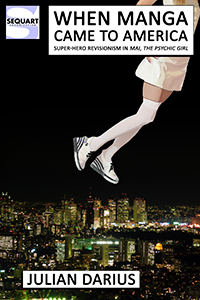Written by Olivia Hicks
Drawn by Emma Oostherhous
In the afterword for the first issue of Grand Slam Romance, both of the creators involved admit they do ‘not know much about softball.’ It is exactly this lack of knowledge that frees them to make the work as wild and fun as it is. The comic certainly exists within the confines of genre work, half romance-comic and half over-the-top sports manga, but it does so while building its own identity. You might think it’s a parody piece, and the elements are certainly there, but as the story moves forward it shows you its raw beating heart.
This is my first exposure to artist Emma Ostherhous (I’d say she has a future, but would imply that she’s not good already – and she definitely is), but a second to writer Olivia Hicks. Hicks’ ongoing webcomic Sarararara: All-American Girl certainly felt different: on its face a send up of Archie-style teen comedy comics in which the orderly, all-American, fashion of things is thrown into chaos by the arrival a new girl into town – a hairy alien who, despite her physical oddity, somehow has all the males of the town lusting madly over her.
It would be easy to imagine such a story as a righteous take-down of the sort of cleaned-up historically revisionist Archie stories in which America is pure and innocent and there no one but white people. Think of something like Criminal: Last of the Innocents, the dark underbelly of the lily-white comics’ world. Yet despite the overall plotting, and the introduction of African-American radical student early in the narrative, Hicks’ writing remains affectionate to the original tales. She wishes not to subvert or ‘deconstruct’ them, but rather to reclaim and re-imagine them as a place where other identities (sexual, racial, etc.) are allowed to blossom.
Grand Slam Romance is a bit less of an effort, if nothing else because the genres that story works in have already been open to different voices, the first issue certainly feels like it could’ve been published in something like Fresh Romance. Still, just because something is familiar doesn’t make it bad; Grand Slam Romance’s charm is in the way it combines and plays up genre tropes without just becoming a cover show. Forging its own identity from the ashes of the past.
The plot, thin as it is, is about the emotional and physical struggle between star players Mickey Monsoon and Astra Maxima. They used to be friends (a long time ago) but now they find themselves as the two star players of rival softball teams, in a world in which softball works according to the power inflation trend of a shonen manga. (375 points are apparently rewarded for a decent home-run and young players can hit a ball straight into the stratosphere.) The first issue is basically a long fight scene, with punching replaced by sports moves, in which all other characters are cyphers. It’s Astra and Mickey’s world, everyone else just lives in it (which is quite a shame considering this is team sport we’re talking about).
Still, there’s fun enough to be had and some sly depths to the story: Oostherhous’ slick and smooth black & white style charges every event on the page with energy, a shot of Mickey revving up for the mother-of-all-curveballs gives way to Maxima’s slow and arrogant transformation. Not only is it a great use of the page space, it’s also a study in creating character contrast with visual language alone: Mickey is all wild-takes and exaggerated movement, everything she does must be a charged show-off for how awesome she is (or thinks herself to be); Maxima’s whole existence is about precision and control, she needs not only to win but to show her opponent that winning was achieved without the slightest of effort.
Again, it’s a model familiar to anyone who has read their share of Shonen manga. (Naruto and Sasuke from Masashi Kishimoto’s popular Naruto have a similar thing going early on.) Yet Hicks and Oostherhous throw the readers a curveball – Maxima’s own vainglorious personality is in itself an act, a masque just as crafted as her opponent’s. She works very hard at appearing not be working hard at all. It adds an extra wrinkle of interest to the relationship between the characters that is surely to be explored in future issues, hopefully while developing other characters as well. (The background shots in team’s locker room offer so much potential.)
The important thing – the thing that makes the issue work both as introduction and a statement of intentions – is that the creators seem to be invested in this world, in their characters. For all of its overblown hyper-energized presentation, it’s a story about recognizable people. The fight between Mickey and Maxima carries within it the implication of deeper impact, such as wealth and class divide. As Maxima steps on the field / page, members of Mickey’s team breathlessly intone that she was bought for the princely sum of sixteen million dollars; other than setting up the tone of the issue (numbers will be inflated, as will everything else) it also establishes the difference between the two protagonists. Even the scene in which child Maxima is whisked away by a passing sports agent brings to mind Charles Kane being taken away from the poor-but-happy childhood home to live with and learn from the rich banker Walter Thatcher in Citizen Kane.
By finding a proper balance between parody and pathos, the first issue Grand Slam Romance creates a fascinating set-up for the future. Showing us that being lighthearted and fun is not an anathema to depth.



















































